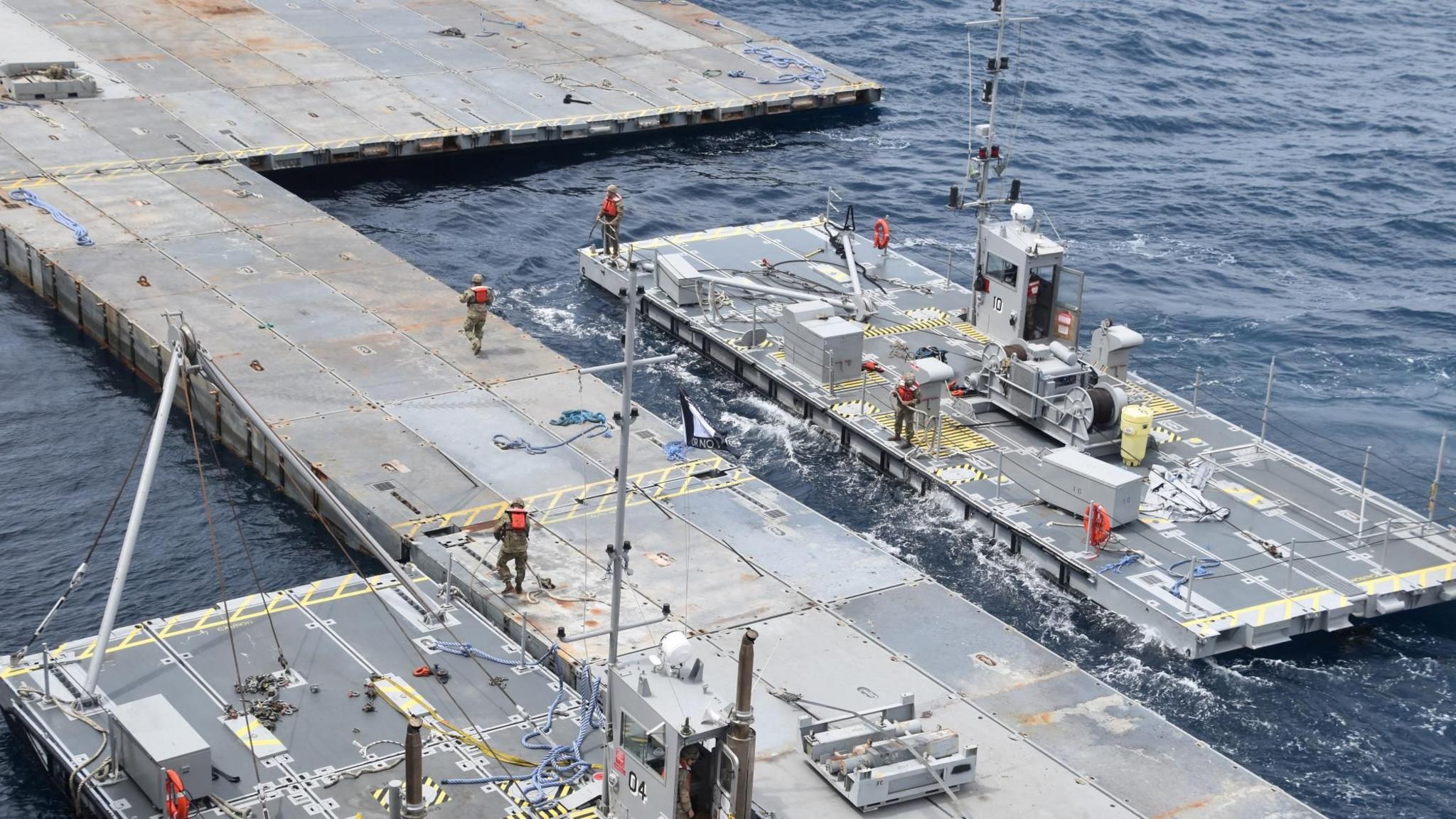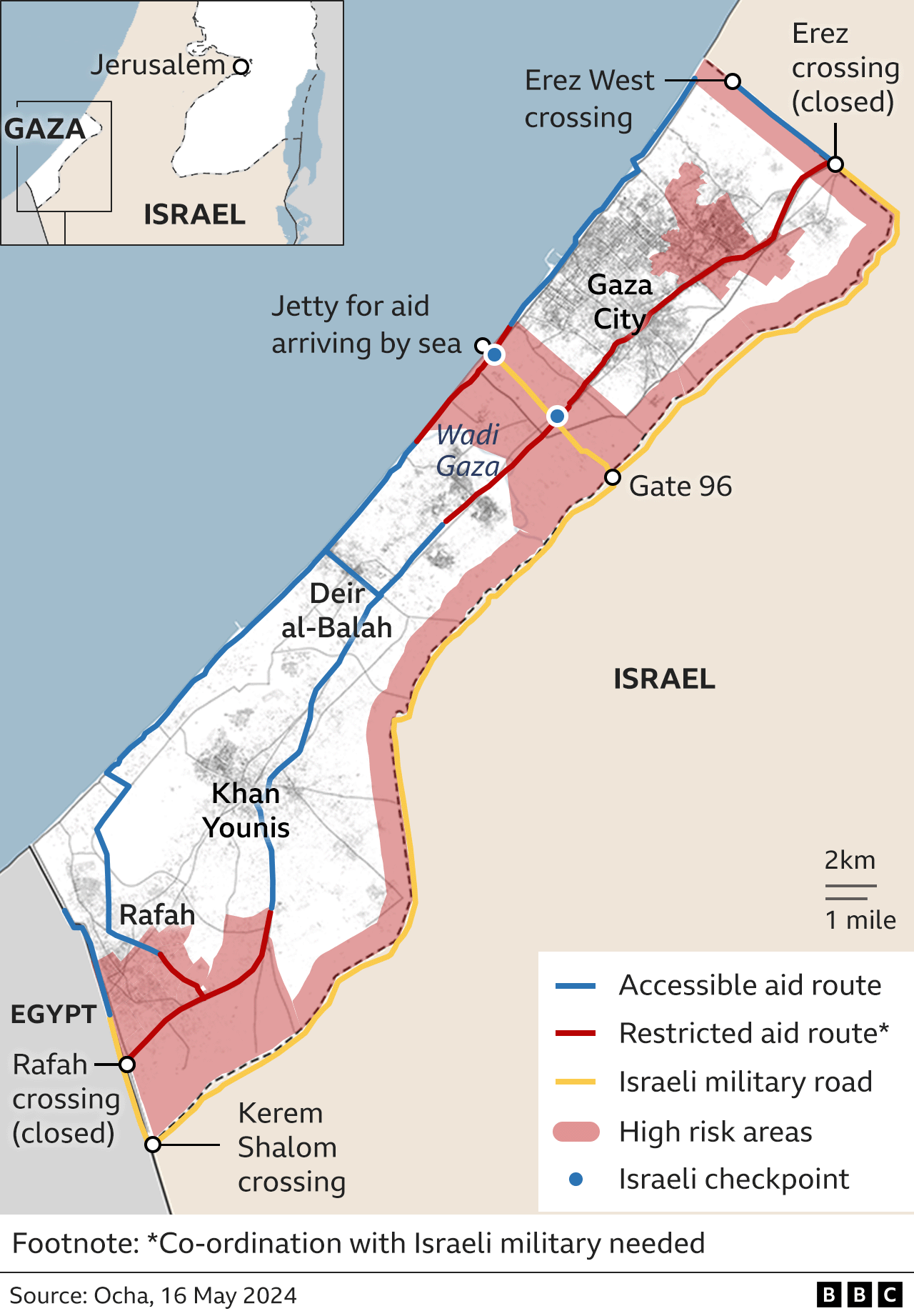US says floating pier for aid anchored to Gaza beach

The US military released photos earlier this month showing the pier being built off Gaza's coast
- Published
A temporary floating pier designed to increase the amount of aid getting into Gaza has been anchored to a beach there, the US military has said.
Lorries carrying humanitarian assistance are expected to begin moving ashore "in the coming days".
At a briefing for reporters on Wednesday, USAID response director Dan Dieckhaus said construction of the pier - known as a Joint Logistics Over-the-Shore (JLOTS) system - is complete.
Hundreds of tonnes of aid has arrived in Cyprus, where screening takes place before being loaded on to ships for delivery to the pier.
Images show US building floating pier for Gaza aid
- Published30 April 2024
Inside the US plan to get food into Gaza by sea
- Published13 March 2024
Vice Adm Brad Cooper, deputy commander of US Central Command, said commercial ships would collect pallets from Cyprus and deliver them to a floating platform anchored several kilometres off the coast of Gaza.
Smaller US military vessels, capable of carrying between five and 15 lorries of aid, will then transport it to a floating causeway, several hundred metres long, fixed to the beach in Gaza.
Lorries will travel along the causeway before dropping off the aid at a marshalling yard on the beach.
Vice Adm Cooper said the UN, primarily the World Food Programme, will be responsible for the onward distribution of aid.
US Central Command stressed that “no US troops entered Gaza” in a brief statement announcing that the pier had been anchored to a beach on Thursday morning, external.
It was reportedly towed from the Israeli port of Ashdod on Wednesday.
The UK Foreign Office said on Wednesday, external that nearly 100 tonnes of UK aid, consisting of 8,400 “shelter coverage kits” (temporary shelters make up of plastic sheeting) left Cyprus on Wednesday, bound for the temporary pier.
“We are leading international efforts with the US and Cyprus to establish a maritime aid corridor. Today's first shipment of British aid from Cyprus to the temporary pier off Gaza is an important moment in increasing this flow,” Prime Minister Rishi Sunak said.
UN officials say there has been substantial co-ordination with the US over the operation of the JLOTS, but that they have lingering concerns about how it will work, whether it will bring what is needed to Gaza, and whether it will prove safe for aid workers and Gazans alike.
Privately, some describe it as a high tech distraction from what is really needed - properly functioning aid crossings and a safe distribution system throughout the Gaza Strip.
The US officials briefing reporters emphasised that the JLOTS was designed to augment existing efforts to bring aid into Gaza, not replace them.
